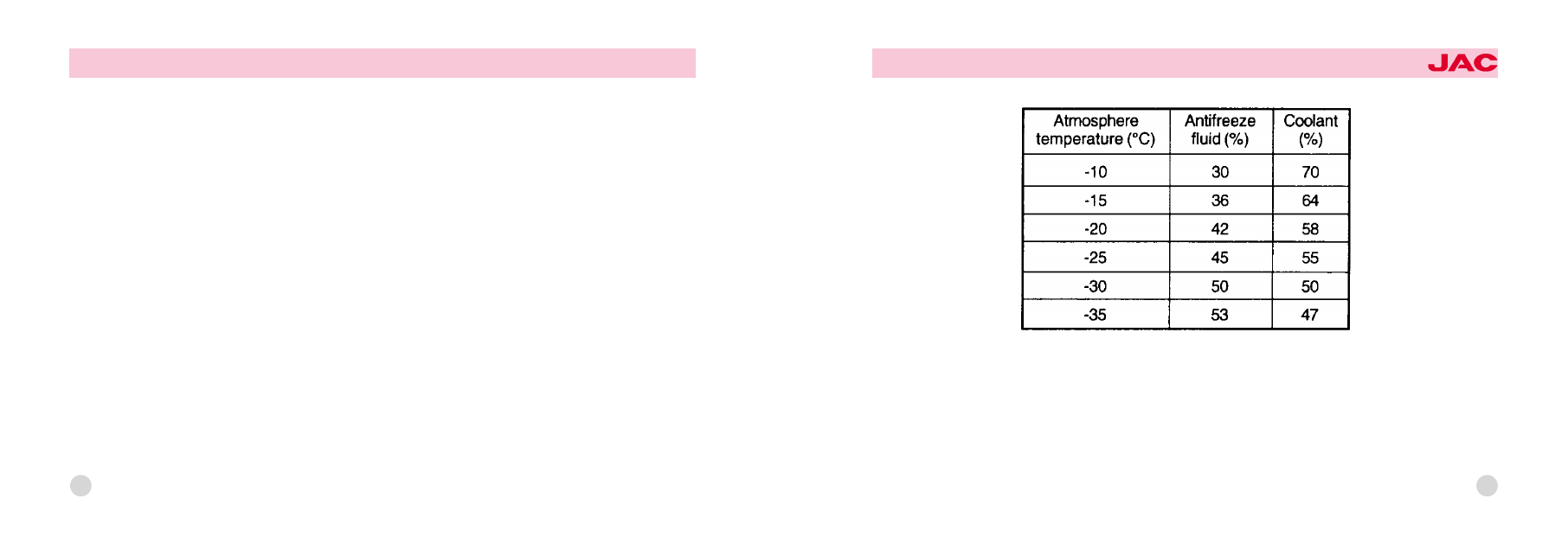Content .. 1261 1262 1263 1264 ..
Isuzu N-Series. Manual - part 1263

157
CAUTION:
荫
Be sure to use anti-freeze at the concentration most appropriate for the atmospheric temperature within a range from
30 to 53%. If the concentration is below 30%, the anti-corrosion property will be adversely affected. If the concentration
is above 53%, the anti-freeze property will decrease and engine overheating will also be caused. Use anti-freeze at the
specified concentration.
荫
If winter is over, be sure to drain the coolant containing antifreeze and put In genuine anti-rust "RADIPET 9".
156
Repeat this operation until a colorless, transparent water flows out from the drain cock.
4. Fill the radiator with city water containing genuine anti-rust 'RADIPET 9' or genuine anti-freeze at a specified con鄄
centration. Run the engine until the coolant is heated to the temperature (90益) at which the thermostat opens, and bleed
air thoroughly from the cooling system.
5. Stop the engine and make sure that the coolant is at the proper level. If the coolant level is low, add city water.
CAUTION:
When the cooling system is cleaned, the coolant or cleaning solution is drained at elevated temperature. Therefore, be
careful not to get scalded.
Addition of coolant
If the warning lamp lights when the starter switch is set to "ON', the coolant level is low. Note that the procedure for
adding coolant varies according to the type of the engine cooling system on vehicle. Use city water as coolant and add
anti-rust or anti-freeze to have a specified concentration for prevention of engine or cooling system corrosion.
Do not use hard water from well river etc.
Antifreeze
Select proper concentration between 30 and 53% by reference to the table shown below.
OWNER爷S MANUAL
JAC HEAVY DUTY TRUCK